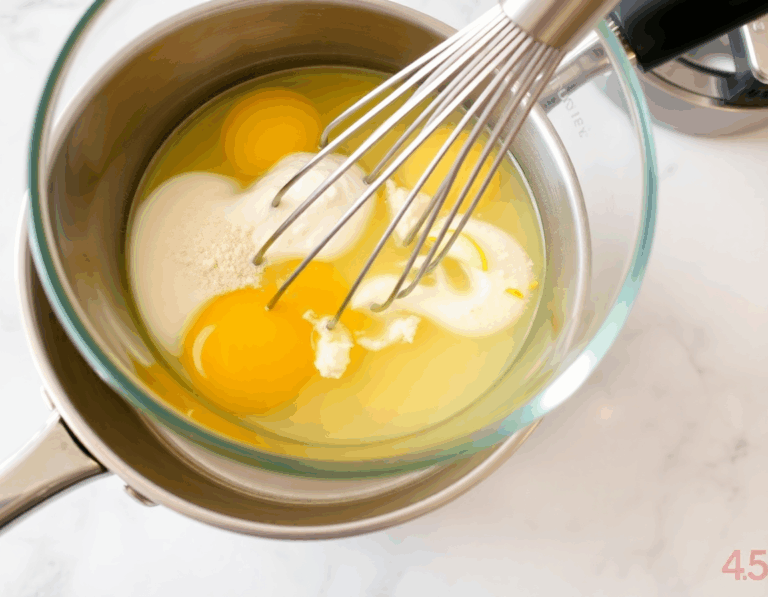
Lemon curd—it’s like a little jar of sunshine, isn’t it? Whether you’re spreading it on toast or sneaking spoonfuls right from the fridge (guilty!), this easy keto version is a zesty delight without the sugar overload. Plus, with the rising trend of low-carb diets in 2023, it’s the perfect indulgence without the guilt trip.
Steps
- Place a glass or ceramic bowl on top of a saucepan with gently simmering water.
- In the bowl, combine the eggs, sweeteners, lemon juice, and lemon zest. Whisk consistently until the mixture thickens, which should take around 10 minutes.
- Once thickened, remove from heat and incorporate the butter into the mixture. Allow the butter to melt for a few minutes and then whisk until the curd is smooth and creamy.
- Transfer the lemon curd to the refrigerator and chill for 2 to 3 hours until it sets.

Ingredients
- 3 large eggs
- 1/3 cup Swerve Confectioners sweetener
- 3 tablespoons allulose or BochaSweet (granular form)
- 2 teaspoons finely grated lemon zest
- 1/3 cup freshly squeezed lemon juice
- 1/4 cup butter, cut into 3 or 4 pieces
Nutritional Values
Calories: 656kcal | Carbohydrates: 6.4g | Protein: 19.6g | Fat: 56g | Fiber: 0.8g
FAQ
- How many carbohydrates are in this keto lemon curd?
- This keto lemon curd recipe contains only 0.7 grams of carbs per serving, making it a low-carb treat you can enjoy without worry.
- What is the shelf life of homemade lemon curd?
- When stored in an airtight container in the refrigerator, homemade lemon curd can last up to 7 days. It’s best to use glass containers to prevent any reaction with the acidity of the lemon.
- Can you freeze lemon curd, and will it affect the texture?
- Yes, you can freeze sugar-free lemon curd; however, the consistency may change slightly after thawing.
- Is it possible to preserve lemon curd by canning?
- Though I have not personally tried canning this sugar-free lemon curd, it should be feasible due to the high acidity of lemons, which helps prevent spoilage. Ensure that jars are sealed properly and store them in a cool, dark place for up to 3 months.
- What can I use instead of butter for a dairy-free version?
- For a dairy-free lemon curd, substitute butter with coconut oil, using 3 tablespoons in place of the 1/4 cup of butter.
Tips
- Use a Glass or Ceramic Bowl: When preparing lemon curd, always opt for a glass or ceramic bowl to avoid any metallic taste that could result from using metal bowls, as lemon juice can react with metal.
- Monitor Consistency Closely: Keep a close watch on the mixture as you whisk it over heat. The curd will thicken suddenly, so be ready to remove it from the heat as soon as it becomes more opaque and your whisk begins to leave tracks.
- Sweetener Selection: For the best results, consider using a combination of Swerve and allulose or BochaSweet. This mix helps prevent recrystallization and ensures a smooth consistency. Avoid liquid allulose, as it introduces too much liquid.
- Dairy-Free Version: To make a dairy-free lemon curd, substitute butter with coconut oil, using 3 tablespoons instead of 1/4 cup of butter. This will still give you a creamy texture without any dairy.
Equipment
- Double Boiler: If you don’t already have one, you might consider buying a dedicated double boiler or a heatproof glass or ceramic bowl that can fit over a saucepan to create a makeshift double boiler.
- Whisk: A good quality whisk is essential for mixing the ingredients smoothly.
- Zester: If you don’t already have a tool for zesting lemons, a microplane or citrus zester would be useful.
- Glass Jars: For storing the lemon curd, you might want to buy glass jars with airtight lids.
